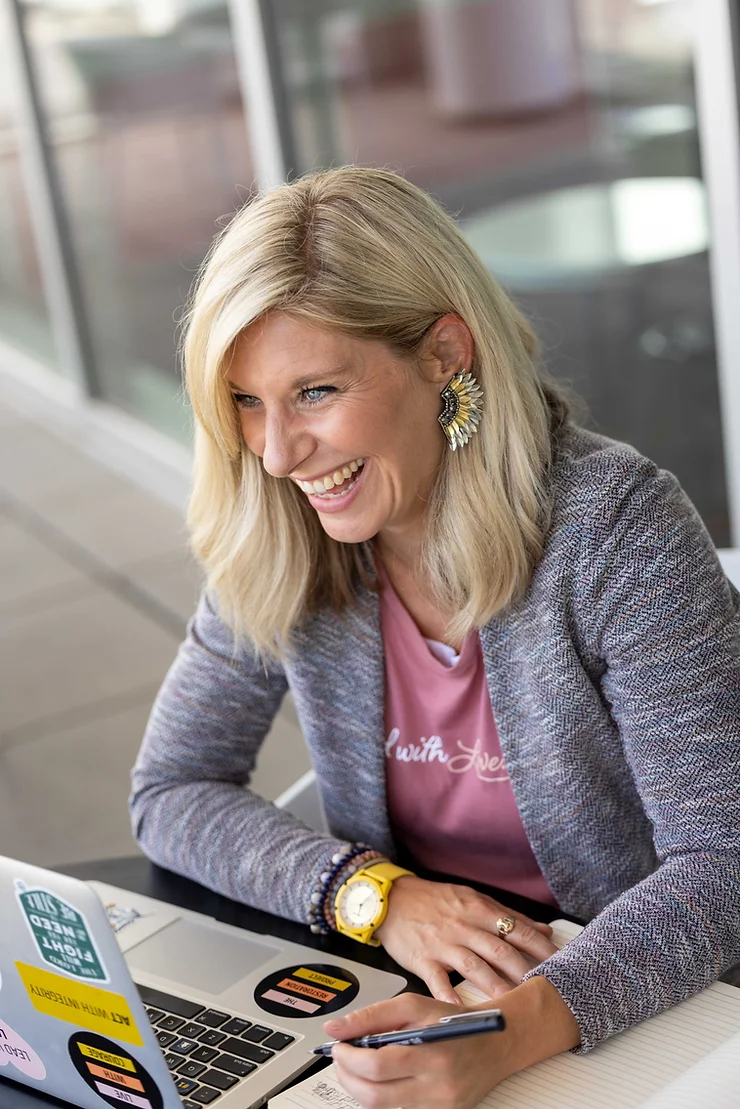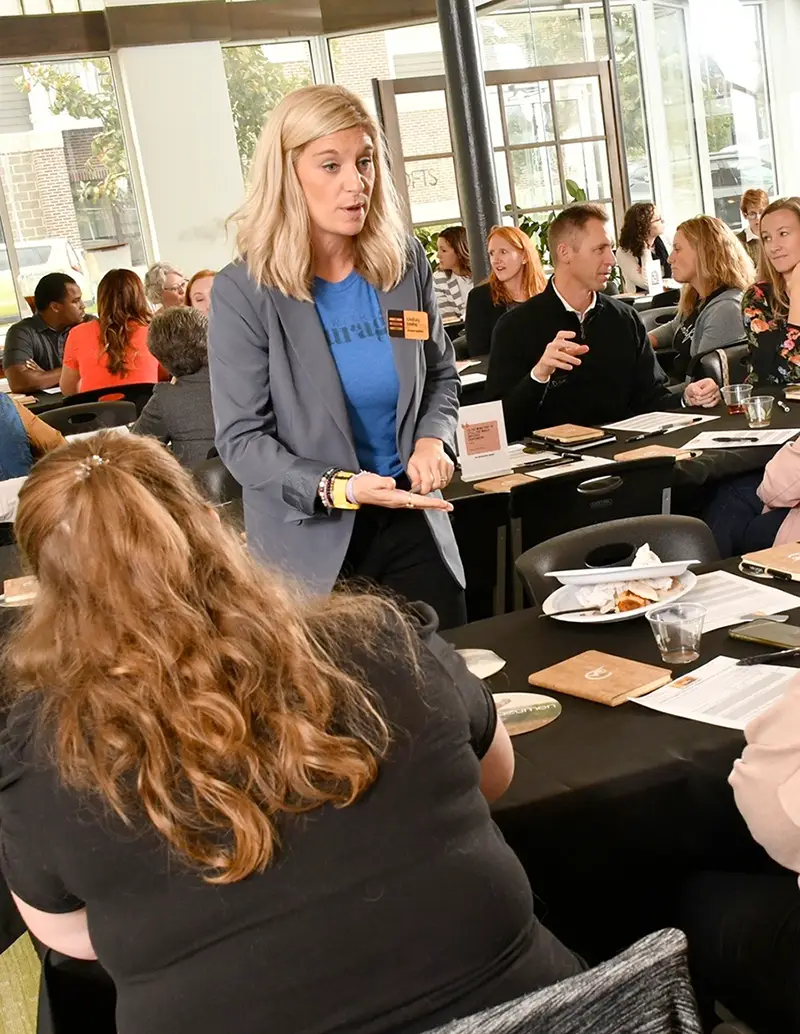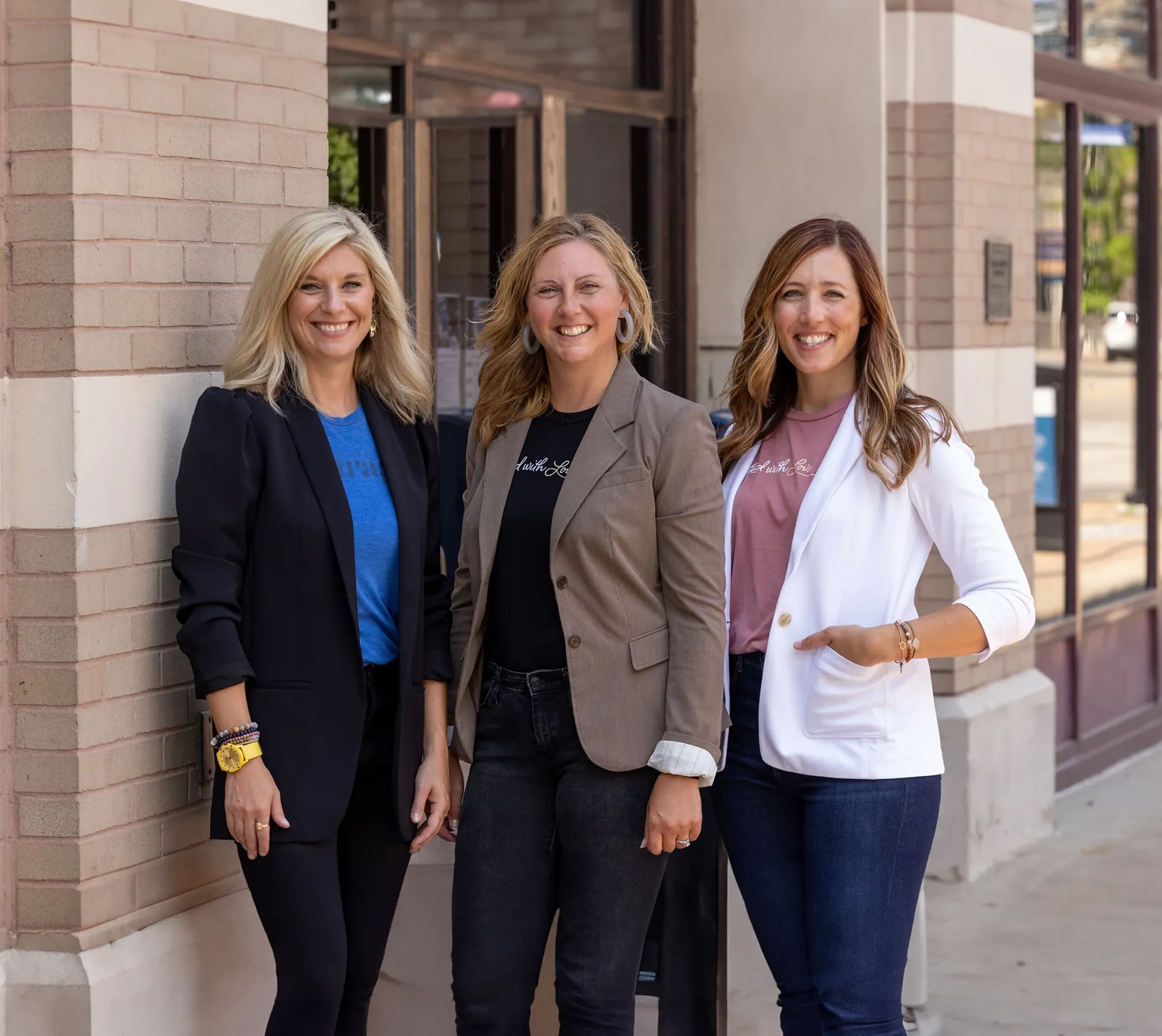
She sat on the floor next to me as I sat in the recliner. Ice machine and pain pills in full effect. It was just a couple days after ACL surgery and my friend (and teammate), Sarah, volunteered to come over and care for me while my husband went back to work.
I asked her why she was on sitting on the floor when the comfy couch was just a few more feet away, and insisted she make herself more comfortable. She looked me in the eyes and told me she would be staying right there. She wanted to be close.
I surrendered. I let her love me in the intimate, deep, and meaningful way she wanted to in that moment, and I allowed myself to receive her love and care that day without feeling guilty for being a burden or an inconvenience. That memory (despite the pain pills) is embedded in my heart, and I will treasure it forever.
This is what having the courage to truly connect with others feels like. It’s more than being in their physical presence. It’s being fully present (heart, mind, body, and spirit), dropping our guard, and allowing our hearts to open up to one another. It’s giving and receiving fully within an exchange. It is relational, not just transactional.
This level of connection takes courage: To slow down and be intentional about how you want it to feel. To be vulnerable and to open up first. To surrender to the moment, extend trust, and release expectations. To allow whatever will happen to happen, being fully present as things unfold and evolve.
This level of connection creates opportunity: To move the interaction from transactional to relational. To feel seen, heard and known and allow the other person to feel the same. To find new perspectives and possibilities.
I recently had to have a difficult conversation with someone. Some challenging interactions resulted in me inviting them into a face-to-face conversation to discuss how we might move forward. As these situations go, we were both nervous but knew it had to happen.
Instead of showing up trying to prove my point or ensure my side was understood, I decided to set an intention to stay curious and to listen. When we arrived, my partner in conversation pulled out a stack of papers ready to plead his case. I put my hand on the papers and said, “Hey, first, I want to know how you’re feeling.”
I could see the stress melt from his face, his shoulders come down, and feel the energy between us change. What mattered most to me was that we connected at a human level first, and I knew the rest would work itself out, and it did. There was a deeper level of honesty and accountability than there would have been had we just decided to argue through our perspectives.
This level of connection creates a desire: To disarm and to do what is right for everyone involved…and isn’t that what we need right now? To remember that in the end, we are all human and we have more in common than we don’t. To compromise, and not in the negative sense of the world but in the way Condoleezza Rice recently shared in an interview with Sharon McMahon:
To compromise in a democracy is that we try to find what I’ll call the overlap of our interests.
So it’s not that kind of squishy middle. It’s not that I compromise on my values or my principles. But it does require me to realize when it’s really not about my principles versus your principles or my values versus your values. It’s just, we have a policy dispute. We have a policy difference. We want to approach a problem differently.
So now, let’s see if there’s a place where I can take what you are interested in, what you need, what I am interested in, what I need, and can we find that overlap? That’s the compromise. And it is absolutely essential in a democracy. Madison called it a constant contestation of politics. So, on this issue you might get a little bit more of what you want, and I get a little bit less.
Having the courage to connect with others is what good leadership looks like. This type of leadership will transform us, those around us, and our world.

Written by: Lindsay Leahy, Dream Builder with The Restoration Project


